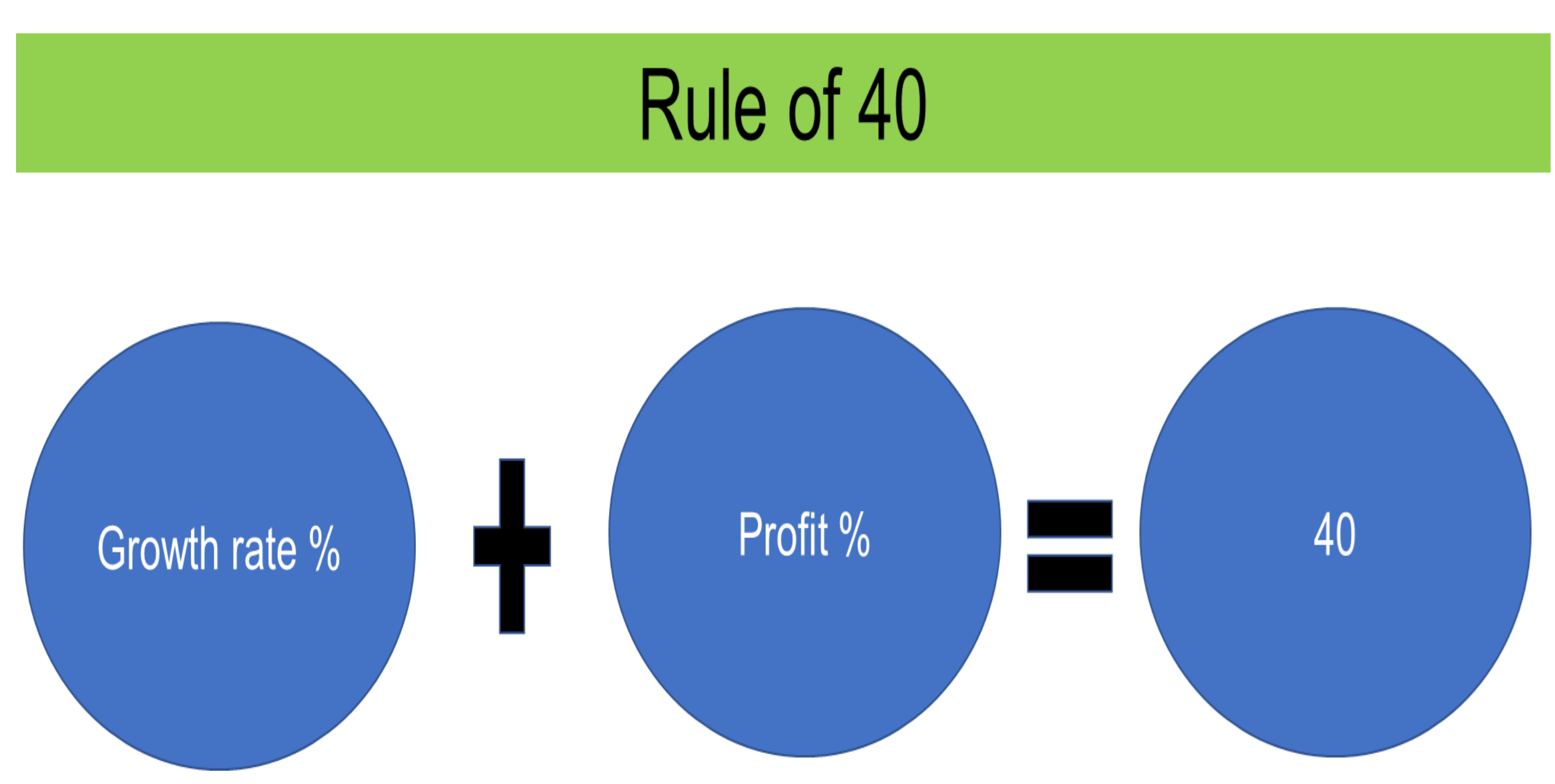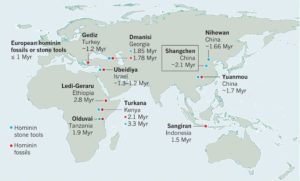The Rule of 40 in Investing

The 40% rule was initially made famous by the legendary investor Brad Feld — in his initial blog titled “The Rule of 40% for a Healthy SaaS Business”.
https://feld.com/archives/2015/02/rule-40-healthy-saas-company.html
What exactly does the rule of 40 say ?
The rule of 40% is a rule of thumb to analyze performance of a growing subscription-based business. The original interpretation from Brad was for SaaS /Software kind of business but is now increasingly being used as a metric for any kind of subscription-based business.
It takes into consideration two of the most important metrics for a subscription company: growth and profit.
The rule simple formula is:
GP = Growth + Profit
Which means that your growth rate plus your profit %should add up to 40% or more .
e.g if your firm is growing at 20% ,you should be generating a profit of atleast 20%.
If you’re growing at 30% you could be generating a profit of atleast 10%.
If you are growing at 40% , it does not matter if you are profitable.
Likewise if you are growing at over 40% ( say 50% ) , then you could even lose 10%.
So the next question is what metrics do you define for Growth and Profitability?
Growth rate
A simple way to measure growth is just do a year on year growth rate of your revenue segments contributing to Monthly recurring revenue.
Now this is important for certain enterprise businesses which may charge a one time set up fee or some additional integration fees.
The key is to measure the growth of your recurring /subscription based business / So to remove all one time/ other revenue streams from this growth calculation.
Profit margin
Again there are numerous Profit metrics . So what metrics make more sense .
The metrics for a subscription based business is EBITDA i.e Earnings before interest, taxes, depreciation, and amortization .
The reason EBITDA is a good Profitability metric is 2 folds:
- Focussing on EBITDA helps investors ignore the impact of financing costs (interest), accounting practices (depreciation and amortization) and tax tables.Now this is not to suggest that these factors may not be important . In many cases these may be important to consider . But the idea here is that a potential investor with a background/expertise can easily step in and help the business fine tune the financing aspects to make it optimal . But as an investor you want to focus on the core business metrics to see how they are doing at what they are good at .
- Also , in a subscription based business esp for SaaS enterprises, the bulk of costs will be COGS ( Cost of Goods Sold ) .e.g. any Cloud Hosting from the likes of AWS, AliCloud etc or Data centre Co-location/Managed hosting costs will scale with revenue. If an enterprise does more On-premises infrastructure then EBITDA may not be the best and its good to look at Net Profit ( after accounting for Depreciation /Amortization for infrastructure /others).
Does the “Rule of 40” hold water for the SaaS companies?
Tomasz Tunguz another famous capitalist at Redpoint Ventures also wrote a post about it, titled “The Data Behind The Rule of 40%”.
The blog is a good analysis of this rule and analyses the Rule of 40 applied to some leading listed SaaS companies .
https://tomtunguz.com/rule-of-40/
The 40% rule is regarded as a good rule of thumb for later stage investors .
As per Brad Feld , the rule is supposed to fit for SaaS companies at scale — assume at least $50 million in revenue — but it correlates nicely with it once you hit about $1 million MRR.
But in APAC , have seen investors use it for companies even in the range of 10 – 20 Mn Annual Revenue ( pure Recurring Revenue)
It can and is with some changes applied by investors in subscription based businesses.
But for investing in early stage companies unit economics metrics ( CAC vs LTV etc ) may be more relevant .
Sources :
https://feld.com/archives/2015/02/rule-40-healthy-saas-company.html
https://tomtunguz.com/rule-of-40/




